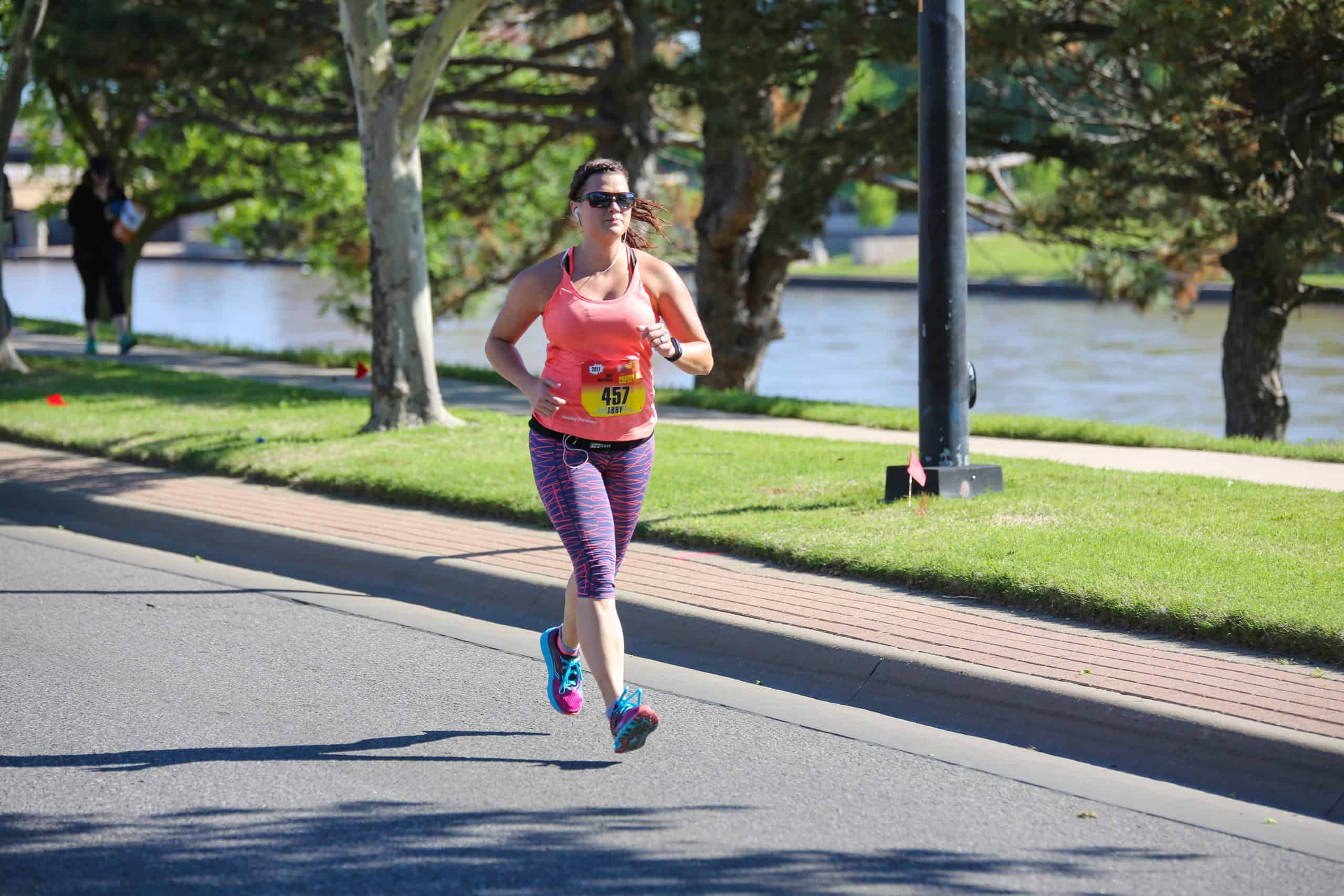Beating the Odds: How to Run with Fibromyalgia and Succeed
Running with Fibromyalgia
Are you a runner who has been diagnosed with Fibromyalgia? If so, you may be feeling frustrated and overwhelmed by the diagnosis. You might feel like your running goals are no longer attainable, but don’t despair!
There is hope for runners living with Fibromyalgia to continue their passion without having to give up completely.
With the right approach, it is possible to manage symptoms and keep running despite this chronic condition. In this blog post, we will explore how to run safely and effectively with Fibromyalgia in order to achieve success on the road, track, or trail!
Understanding Fibromyalgia and its Symptoms as a Runner
Fibromyalgia is a complex ailment, characterized by an array of musculoskeletal pain and often accompanying symptoms such as exhaustion, mental fog, and emotional disturbances. Although the exact cause remains unknown to scientists at present time, it has been hypothesized that fibromyalgia alters how a person’s brain and spinal cord respond to pain signals – according to Mayo Clinic experts. This means that once a person is diagnosed with fibromyalgia, the pain can affect their running in many ways.
Fibromyalgia is an individualized disorder that often begins to show its symptoms in a person’s thirties. Sometimes, it manifests as an abrupt spike in body pain and other times evolves slowly with time.
It’s important to understand that Fibromyalgia is not curable but can be managed with proper diet, exercise, and lifestyle modifications. Learning how to work with the condition instead of against it can help runners to continue achieving their goals.
Related Article: Running with Chronic Pain

Symptoms of Fibromyalgia
- Widespread pain. Fibromyalgia can cause consistent and sore aches that have endured for three or more months. For a diagnosis of fibromyalgia to be made, the discomfort must also be across both sides of your body as well as above and below your waistline.
- Fatigue. Despite the fact that individuals affected by fibromyalgia often sleep for extended periods, they usually wake feeling exhausted. Pain is a frequent cause of disturbed slumber and many people suffering from this condition also suffer from additional sleeping disorders such as restless leg syndrome or sleep apnea.
- Cognitive difficulties. A symptom frequently referred to as “fibro fog” obstructs one’s ability to concentrate, stay focused, and think clearly.
Other symptoms often accompany fibromyalgia such as GI issues, anxiety, and depression. However, the three primary symptoms are those listed above.
Benefits of Running with Fibromyalgia
It is important to note that running can be a beneficial activity for those living with fibromyalgia. There is very little evidence that aerobic exercise can help decrease pain and stiffness associated with fibromyalgia, more research needs to be done. (1) However, many people report improved mobility and function with regular exercise.
Running can also help individuals manage stress effectively, help them navigate the exhaustion that comes with fibromyalgia, and increase overall energy levels. (2)
Additionally, running can serve as a form of meditation and allow individuals to become more mindful of their body’s abilities and limitations.
Tips for Running with a Fibromyalgia Diagnosis
The first thing to do is not let your diagnosis define you. I see this commonly with all types of issues and it can be devastating for a person. The physical manifestations of the disease are hard enough to overcome, letting yourself mentally limit yourself by defining yourself as a person with fibro can make things even more difficult.
There are many runners that have received a diagnosis of fibromyalgia and have been able to return to their prior level of running. There is hope.
Similar to when you run with chronic pain, you need to become an expert at listening to your body. More than likely it has been quite a while since you have consistently run due to the lengthy process of getting a diagnosis and trying to figure out why you hurt.
With that said, it is important to start slowly and gradually. You are basically a newbie runner again (if you are returning to running) and need to act like one. Also, remember that you aren’t 15 anymore and can’t just jump into something and be fine!
Start with getting into a habit of moving. Try going for a 10-15 minute walk each day just to get used to being up and moving around more.
When you are starting out follow the 2-hour rule that is outlined in the article about chronic pain.
Gradually increase the amount of walking you do each day to 30 minutes. Once you can successfully walk for 30 minutes most days without a significant increase in pain or fatigue then you can start adding in running.
Start with running/walking and LISTEN TO YOUR BODY.

Keep a Journal to Track Symptoms
Keep track of your pain and fatigue levels in a journal following different types of runs or even look at trends based on time of day, duration, etc. A journal for tracking your fibromyalgia symptoms, in the beginning, can be very useful when you are learning to listen to your body!
How to create a training plan that works with your symptoms
Whenever creating a training plan, it is important to take into account your current activity level and any limitations due to fibromyalgia. It may be beneficial for an individual with fibromyalgia to work with a professional running coach who can help them create a personalized training plan that works well with the individual’s specific symptoms. Definitely look for a coach that has experience working with someone with a chronic disease such as fibromyalgia.
Related article: Work with Dr. Abby
The goal should be to slowly increase the intensity and duration of your running as well as maintain consistency in order to reduce pain and fatigue. A combination of aerobic exercises such as walking, jogging, cycling, and swimming can be beneficial for people with fibromyalgia.
Strength training is also important so that you can build a strong foundation of muscles that will help support your joints and help prevent injury.
It is also important to note that rest days are essential for any runner, but especially for those living with fibromyalgia. If you find that running increases your pain or fatigue significantly it may be beneficial to take a step back and reduce the intensity of your runs or take more frequent rest days.
Finally, it is also important to make sure that you are eating a well-balanced diet and getting enough rest. These lifestyle habits can make a world of difference when trying to manage the pain and fatigue associated with fibromyalgia.
The importance of rest days and Recovery Time when Running with Fibromyalgia
Rest days are very important for anyone, but especially for runners living with a chronic illness such as fibromyalgia. Too much running can increase the pain and fatigue associated with fibromyalgia while rest days can help reduce these symptoms.
The typical recommendation for rest days is at least one full day a week. For a person dealing with fibromyalgia, you should probably increase this to around 3 days a week until you learn your body and know what to expect with exercising.
Finding support from other runners who have overcome similar challenges
The physical symptoms of fibromyalgia can be devastating, but learning to cope with it mentally is hard too. Finding and connecting with those in the running community is also an important part of recovery. Having a support system of people who can relate to your experiences and provide motivation and advice when you’re feeling discouraged can be invaluable.
There are support groups in every town for people living with fibro and are an invaluable network of people to discuss your trials and struggles that truly understand what you are going through.
Overall, running with fibromyalgia can be a challenging but rewarding experience. If you follow the tips outlined above and truly
Final Thoughts on Running with Fibromyalgia
Running with fibromyalgia can seem like a daunting task, but it is possible. It is all about taking the time to listen to your body and finding what works best for you in terms of activity level and rest days. Working with a coach or joining a support group can be beneficial as well. The important part is that you find something that works for you and that allows you to remain active without exacerbating your symptoms. With some patience and dedication, running with fibromyalgia can be a part of your life!
AFFILIATE DISCLOSURE
As an Amazon Associate, I earn from qualifying purchases. This post may contain affiliate links. If you use these links to buy something we may earn a commission. The Site may contain links to affiliate websites, and we receive an affiliate commission for any purchases made by you on the affiliate website using such links.
All information should be used as a tool for more knowledge on the subject topic, to use as references for later articles where applicable, or just to keep it in mind during future exercise routines or activities.
This article is not meant to give medical advice or to replace professional health care. Should any ailment occur please contact your doctor or physical therapist immediately to keep yourself safe and prevent further damage.
The author is not liable for any personal or commercial damage directly or indirectly related to the content hereof. You are responsible for adhering to local laws and regulations regarding health & safety, including proper use of equipment or safety gear, and compliance with governing healthcare associations, and state, and federal regulations.
References for Running with Fibromyalgia
- Bidonde J, Busch AJ, Schachter CL, Overend TJ, Kim SY, Góes SM, Boden C, Foulds HJ. Aerobic exercise training for adults with fibromyalgia. Cochrane Database Syst Rev. 2017 Jun 21;6(6):CD012700. doi: 10.1002/14651858.CD012700. PMID: 28636204; PMCID: PMC6481524.
- Puetz TW, Flowers SS, O’Connor PJ. A randomized controlled trial of the effect of aerobic exercise training on feelings of energy and fatigue in sedentary young adults with persistent fatigue. Psychother Psychosom. 2008;77(3):167-74. doi: 10.1159/000116610. Epub 2008 Feb 14. PMID: 18277063.
How to Run with Fibromyalgia

Dr. Abby Siler, PT, DPT is a Physical Therapist with 10 years of experience in a variety of settings. She has spent the majority of her time treating athletes in orthopedic clinics and worker’s compensation cases. She is a runner herself for the past 15 years and a lifelong athlete. Dr. Abby loves to teach runners how to stay injury free and out of her clinic.






